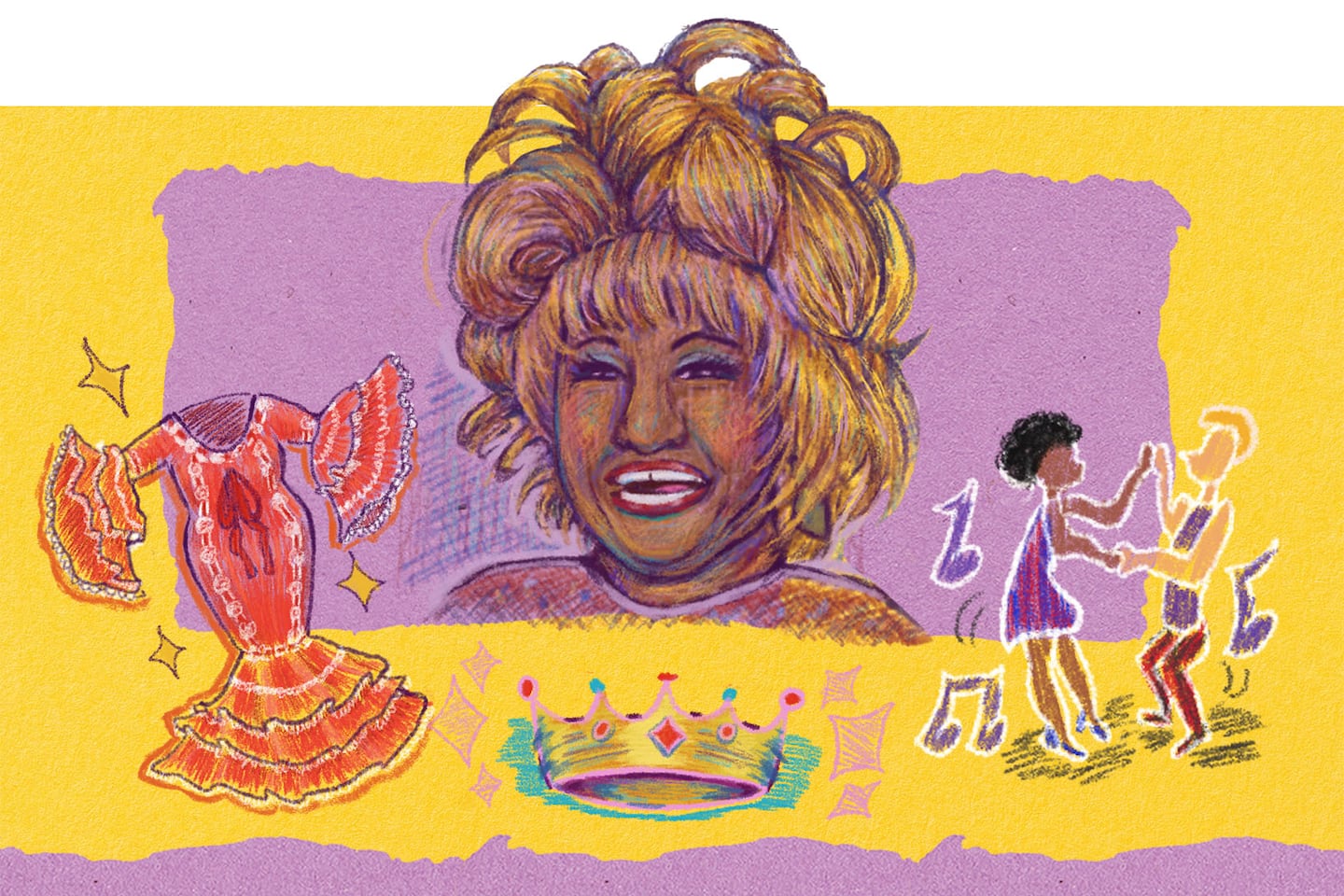
Celia Cruz was a trailblazing singer in Latin music. When I discovered her songs, I was in awe of how much creativity, charisma, and charm can be in one person. She embraced the boldness of salsa that I’ve come to adore.
Celia loved dazzling outfits, such as this Bata Cubana, or Cuban Rumba, a dress she wore in many performances.
She brought together large and colorful wigs, shiny and intricate accessories, and dynamic dress silhouettes with sequins and ruffles to create outfits filled with drama!
She recorded hit after hit with Fania Records in the 1970s — breaking through
a male-dominated scene.
She brought together large and colorful wigs, shiny and intricate accessories, and dynamic dress silhouettes with sequins and ruffles to create outfits filled with drama!
Many recognize her from her signature rallying cry:
‘Mira chico, you’re Cuban, you know well how strong our coffee is. How are you going to ask me if I want it with or without sugar?
With AZÚCAR of course!’
It came to be after a waiter in Miami asked if she wanted sugar with her coffee, and she incredulously said,
She earned 23 gold albums, three Grammy Awards, four Latin Grammy Awards, and the President’s National Medal of Arts over the course of her career.
The Afro-Latina’s story begins on October 21, 1925, when she was born in Havana.
Celia won a singing contest as a young girl, and knew she had to start pursuing her dream.
The La Sonora Matancera band selected her from an audition and she performed all around Cuba in the 1950s.
After Fidel Castro took power, Celia left the country to seek more work opportunities with the band — not knowing he would blacklist her and she would never be able to legally return to Cuba.
Soon after she had moved to the United States, her parents died. This crushed Celia, but now that she no longer had to support her family financially, she gained the courage to pursue a solo singing career.
Celia in 1957,
four years before she moved.
She went on to win over the hearts of millions with songs such as “Quimbara,” “Bemba Colorá,” and “La vida es un carnaval.”
Celia performed with legends including Héctor Lavoe, Willie Colón, Gloria Estefan, and Dionne Warwick, and earned a star on the Hollywood Walk of Fame in 1987.
She produced new music well into her 70s.
Her lyrics highlighted Black women, celebrated Cuban culture, sizzled with her zest for life, and made her an international icon. Salsa has become a huge part of my life, and I’m grateful to have her music filling the halls of places where my friends and I dance every week.
Although she died in 2003,
her songs will sweeten our lives for generations to come.
What is salsa?
Salsa is a Latin‑American style of music that fuses rhythmns from Cuba, Puerto Rico, Colombia, and more.
Many of the foundations originated from Africa. Musicians blended African percussions with European influences, and salsa reached popularity in the United States in the 1960s.
It’s also a style of dance. People spin and step with a partner or on their own.
Sources
NPR Alt Latino podcast “Celebrating the legacy of Celia Cruz”;
the Smithsonian;
National Women’s History Museum;
Black History, For Real podcast “Azucar! Celia Cruz: The Queen of Salsa”










Leave feedback about this